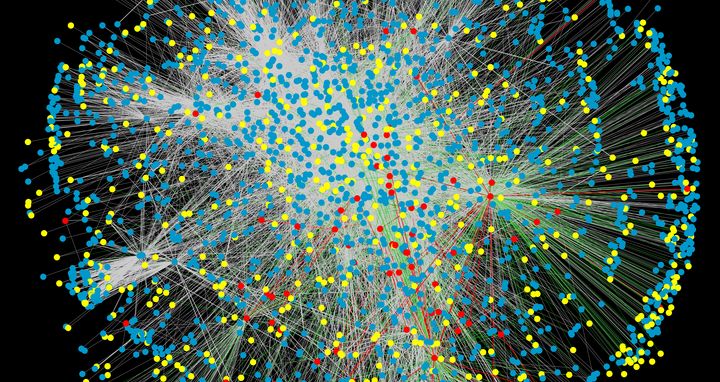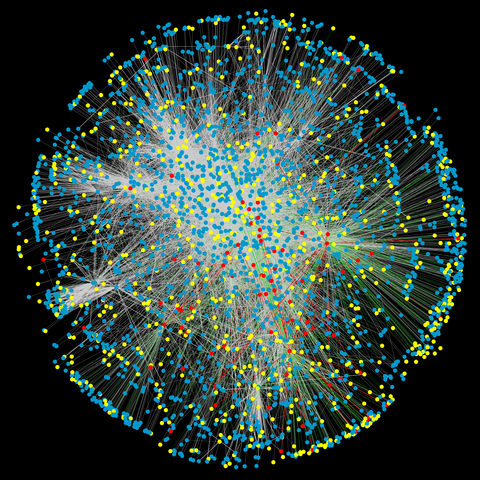Unusual suspects
Intensive research is being carried out into the responsible proteins, but effective therapeutic approaches have yet to be developed.
Neurodegenerative diseases – including Alzheimer’s, Parkinson’s and Huntington’s disease, and amyotrophic lateral sclerosis (ALS) – are triggered by misfolded, aggregated proteins that are deposited in the nerve tissue, where they cause serious damage and lead to the death of neurons. The symptoms of these diseases include dementia, movement disorders and paralysis. “Intensive research is being carried out into the responsible proteins, but effective therapeutic approaches have yet to be developed as we have only a fragmented understanding of the triggering molecular mechanisms,” says Professor Erich Wanker, head of the Proteomics and Molecular Mechanisms of Neurodegenerative Diseases Lab at the Max Delbrück Center for Molecular Medicine in the Helmholtz Association (MDC).
In order to identify other proteins involved in disease development, the researchers set out to investigate the relationships between proteins known to cause neurodegeneration and previously unsuspected candidates. Who interacts with whom? How large is the network of interactions? Which proteins could also be involved in neurodegenerative diseases? The MDC scientists provide answers to all these questions in their latest study, published in Cell Reports, which was developed in close cooperation with a team led by Professor Roded Sharan, a member of the School of Computer Science at Tel Aviv University, and other international research groups.
Expanding the pool of potential candidates
Proteins are shown as colored circles (red: known proteins causing neurodegeneration, yellow: known proteins associated with other diseases, blue: proteins not previously associated with diseases).
The experimentally determined interactions between proteins are shown as lines, with red lines representing direct (immediate) interactions between proteins causing neurodegeneration. Green lines indicate direct interactions between neurodegeneration-causing proteins and other disease-associated proteins, light grey lines represent the remaining interactions.
“First, we digitally scoured past scientific studies to identify all the proteins we know to be associated with neurodegenerative diseases,” explains Christian Hänig, a bioinformatician in Wanker’s research group and lead author of the study. “We then conducted laboratory tests on the most relevant 500 proteins for possible interactions with other proteins.”
The pool of counterparts tested in the study included almost all human proteins. Using a robot-assisted high-throughput method, the team systematically investigated interactions between individual proteins. Using the yeast two-hybrid method, the genetic material encoding the proteins to be tested was introduced into different strains of yeast cells. Tests were then carried out on all the possible pairings of the different yeast cell strains. If there was an interaction between the two proteins contained within the fused yeast cells, the cell would send out a signal – for example, in the form of a color reaction. If the proteins did not interact, no such signal was triggered.
The interactome network therefore provides us with important information on many other potential suspects.
The MDC research team processed the data from their laboratory investigations using bioinformatic methods and combined their findings with protein interactions already known to science. The resulting dataset, which the team have dubbed NeuroNet1.0, is an interactome network containing more than 30,000 connections among 5,000 proteins – all of which could be related to neurodegeneration. These include a large number of proteins that have not yet been associated with this disease group. “The interactome network therefore provides us with important information on many other potential suspects,” explains Hänig.
Results from the random sampling of transgenic fruit flies and tissue samples from the brains of Alzheimer’s patients confirm the evidence from NeuroNet1.0. ”Also here, as predicted with the help of our network, we witness the interaction of known neurodegenerative proteins with proteins whose role was previously unclear,” says Wanker. “We hope that many research groups will use our data to shed more light on the molecular mechanisms of neurodegenerative diseases and to find starting points for effective therapies.”
Text: Nicole Silbermann
Further information
Literature
Christian Hänig et al. (2020): “Interactome Mapping Provides a Network of Neurodegenerative Disease Proteins and Uncovers Widespread Protein Aggregation in Affected Brains”, Cell Reports, DOI: j.celrep.2020.108050







